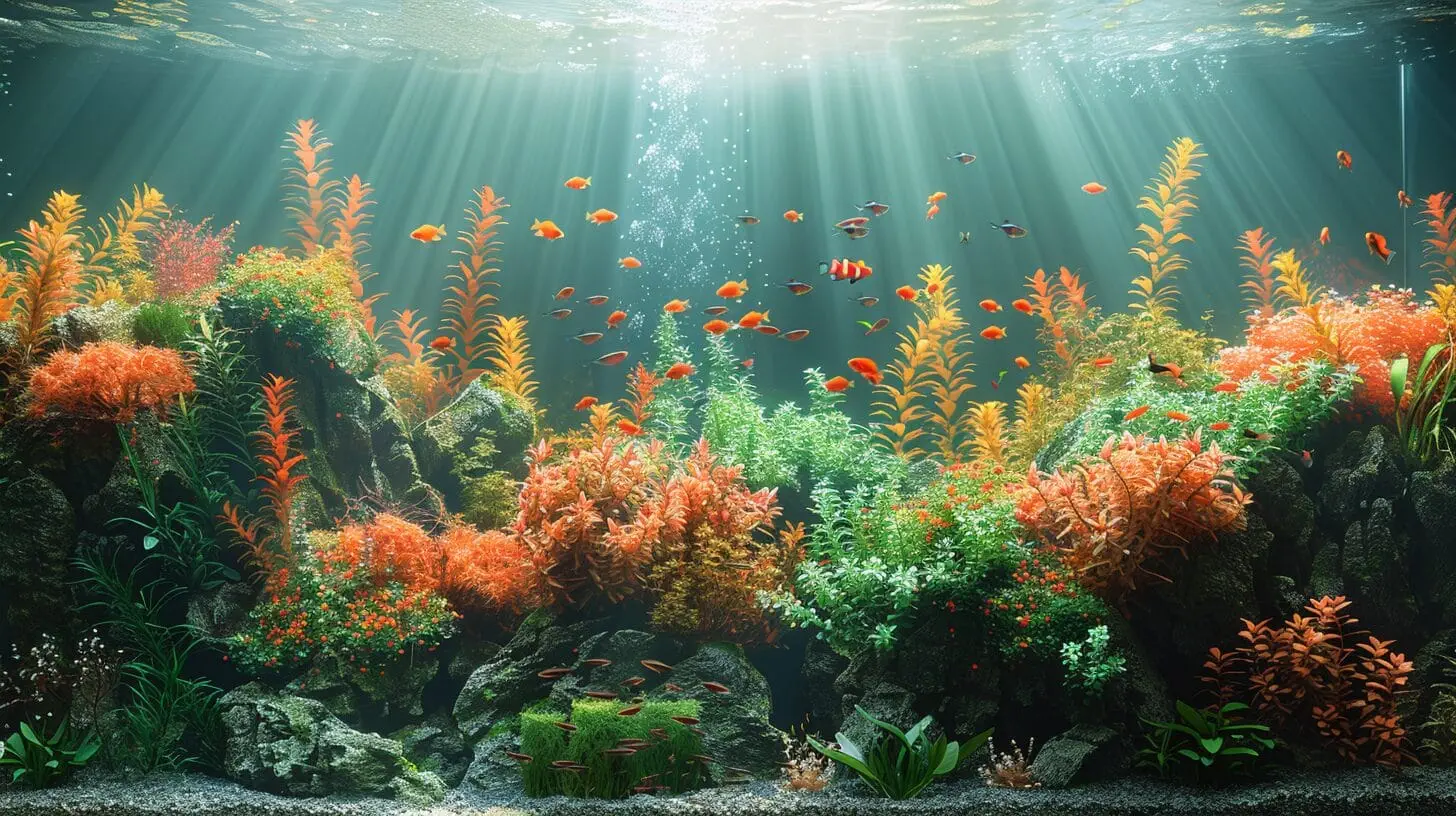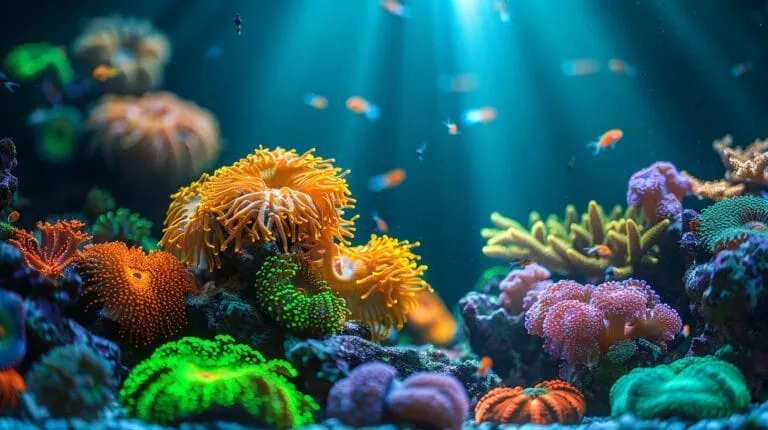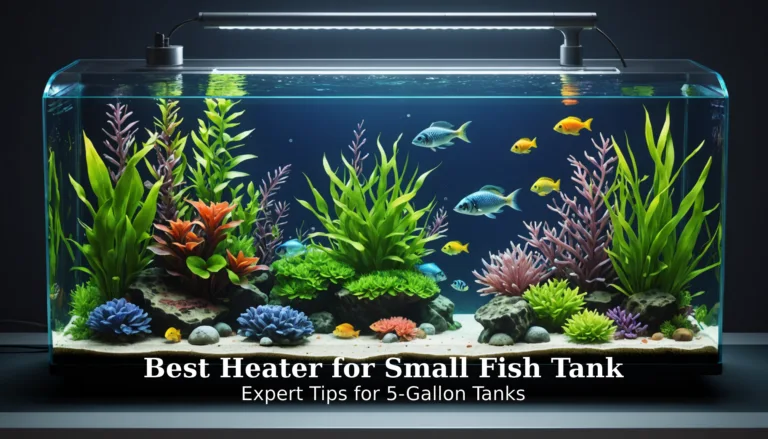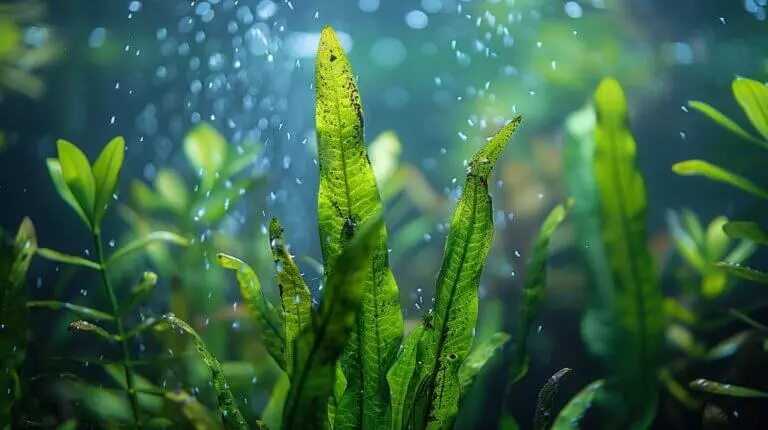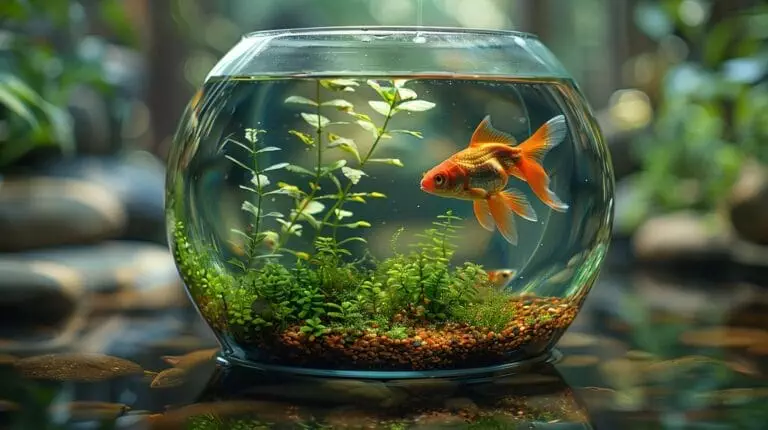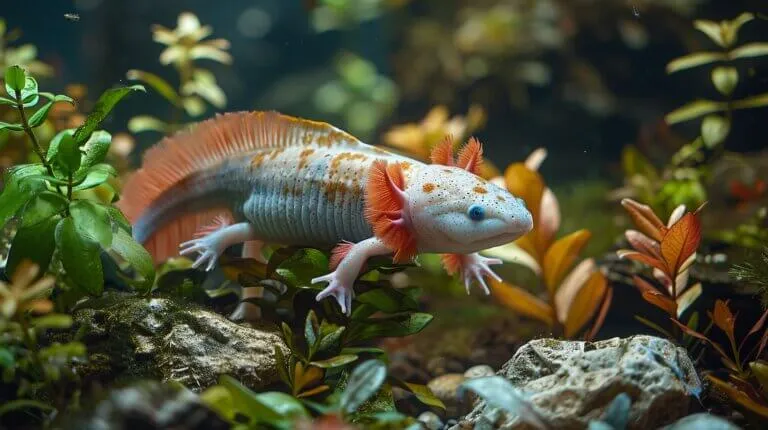Curious about GH level in your aquarium? Let’s dive into balancing water quality with our General Hardness Aquarium guide! Explore how GH impacts your aquatic environment and discover effective strategies for maintaining optimal GH levels to keep your aquarium inhabitants healthy and thriving.
Key Takeaways
- GH impacts aquatic life and pH stability.
- Test GH levels with accurate kits.
- Adjust GH using calcium carbonate.
- Maintain stable KH levels for buffering.
- Monitor and manage GH for balance.
Understanding General Hardness and its Importance in Aquariums

Understanding general hardness (GH) is essential for maintaining a healthy aquarium environment, as GH levels above or below the recommended ppm can be detrimental to freshwater aquariums. General hardness (GH) in aquarium water is a critical aspect of water parameters that directly impacts the well-being of aquatic life.
GH levels refer to the concentration of minerals, such as calcium and magnesium, dissolved in the water. It plays a significant role in maintaining stable pH levels within the aquarium. Fluctuations in GH can lead to pH imbalances, causing stress to fish and other inhabitants. Hence, monitoring and managing GH levels are crucial for creating a stable and thriving aquatic ecosystem.
In water chemistry, GH is closely related to carbonate hardness (KH). While KH mainly influences pH stability, GH affects overall water quality and the health of aquarium organisms. Keeping an eye on both is crucial, especially in freshwater aquariums where the balance can influence the well-being of species such as african cichlids. High GH levels can have adverse effects on aquatic life, such as inhibiting breeding or causing health issues.
By understanding the importance of GH in maintaining a balanced aquarium environment, aquarists can ensure the well-being of their beloved underwater pets, including freshwater fish and african cichlids.
How to Measure and Adjust the GH and KH Levels in Your Aquarium

To effectively monitor and adjust the GH and KH levels in your aquarium, start by utilizing test kits for accurate measurements and consider reverse osmosis water before adding to the tank. GH values indicate the concentration of calcium and magnesium ions in the water, while KH measures the buffering capacity against pH changes.
If your GH levels are too low, consider adding minerals like calcium carbonate to raise it. On the other hand, if GH levels are high, regular water changes using softer water can help lower it. For KH adjustments, products like baking soda can be used to increase levels, while driftwood or peat moss can help decrease them.
Remember that tap water can impact GH and KH levels, so it’s essential to test and treat it accordingly. By understanding these measures and making necessary adjustments, you can create a stable and healthy aquatic environment for your fish and plants.
The Effects of Soft Water and Hard Water on Aquarium Life
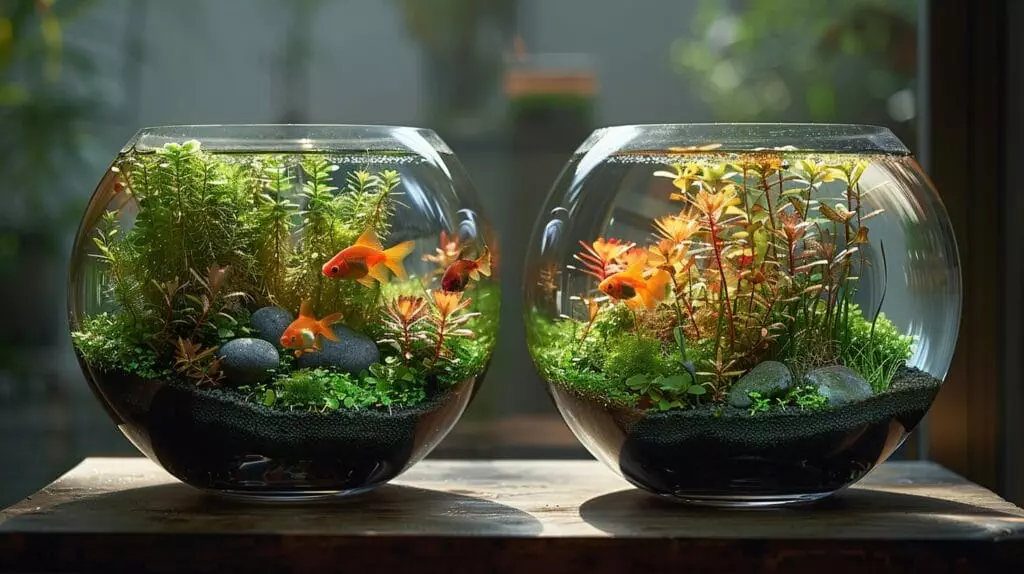
Soft water and hard water in aquariums can have a significant impact on the health and wellbeing of aquatic life, including livebearers. When it comes to the effects of soft water and high pH or hard water and low KH on aquarium life, here are a few key points to keep in mind:
- Soft Water Benefits: Certain fish species, like tetras and rasboras, thrive in soft water conditions, as it mimics their natural habitat.
- Hard Water Drawbacks: Fish that require softer water may struggle to adapt in hard water, leading to stress and potential health issues.
- Importance of Carbonate Hardness: Adequate carbonate hardness is essential for the development of snail shells, ensuring they’re strong and healthy.
- Stable pH Levels: Hard water with high carbonate hardness levels can help maintain a stable pH in the aquarium, preventing sudden fluctuations that can stress fish and other aquatic creatures.
Understanding the impact of water hardness on your aquarium inhabitants is vital for creating a thriving aquatic environment, catering to the nuanced needs of tropical fish.
Managing pH Swings and Maintaining a Stable Environment in Your Aquarium

After considering the effects of water hardness on aquarium life, including livebearers, it becomes essential to address the management of pH swings, using methods to lower your pH level, and the maintenance of a stable environment in your aquarium. Maintaining a stable pH is vital for the well-being of your aquatic pets, and keeping KH levels in the appropriate range can help prevent a pH crash in freshwater aquariums.
pH swings, especially towards low pH levels, can stress fish and disrupt the balance of your tank. To guarantee stability, focus on the buffering capacity of your water, often determined by the carbonate hardness (KH) level. High KH acts as a buffer, helping to prevent drastic pH fluctuations. Here’s a simple guide to assist you in managing pH levels and promoting a stable environment:
| Key Points | Actions |
|---|---|
| Monitor pH regularly | Check levels weekly |
| Use pH buffers | Add buffers if necessary |
| Perform water changes | Regularly refresh water |
| Avoid sudden changes | Gradually adjust parameters |
| Test water quality | Keep track of KH levels |
How Does Water Quality Affect the Effectiveness of Fish Tank Filters?
The quality of water in a fish tank is crucial for the performance of the best quiet fish tank filter. Poor water quality can lead to clogging and decreased efficiency. It is important to regularly monitor and maintain water quality to ensure the filter functions effectively and keeps the tank environment healthy for the fish.
Case Study: Adapting Water Chemistry for Soft Water Fish

Exploring the nuances of water chemistry adjustments for soft water fish reveals the intricate balance required to create ideal living conditions for these aquatic species. When adapting water chemistry for soft water fish, it’s essential to take into account the following:
- Understanding GH and KH: Soft water fish thrive in environments with low general hardness (GH) and carbonate hardness (KH) levels.
- Balancing Water Chemistry: Achieving ideal conditions involves carefully adjusting GH and KH levels to mimic the natural habitat of soft water fish, often requiring the need to lower the pH or adjust to acidic water conditions.
- Monitoring Water Parameters: Regularly testing and monitoring water chemistry parameters is essential to guarantee the stability of the aquarium environment.
- Researching Species Requirements: Different soft water fish species may have specific preferences, so researching their individual needs is key to creating a suitable habitat, considering the substrate and buffering capacity of the water.
Creating a successful aquarium for soft water fish requires attention to detail and a thorough understanding of water chemistry to provide a comfortable and healthy environment for these unique aquatic creatures.
How Can I Maintain Water Quality in an Aquarium with General Hardness?
Maintaining water quality in an aquarium with general hardness is crucial for the health of your fish and other aquatic animals. To ensure optimal conditions, regular water testing, water changes, and proper filtration are essential. Understanding and managing the general hardness levels are key to uncovering the truth aquariums. One way to manage general hardness levels in the aquarium is to choose fish and other aquatic animals that are well-suited to the specific water conditions. Additionally, incorporating semi aquatic plant options, such as Java fern or Anubias, can help to naturally regulate water quality by absorbing excess nutrients and pollutants. By taking a proactive approach to maintaining water quality and general hardness, you can create a thriving aquatic environment for your fish and plant life.
Conclusion
To sum up, keeping the overall hardness levels in your aquarium is essential for the health and well-being of your aquatic pets.
By consistently testing and adjusting the GH and KH levels, you can establish a stable and comfortable environment for your fish and plants.
Remember to monitor pH levels and make any needed adjustments to guarantee a thriving ecosystem in your aquarium.
With proper care and attention, your aquarium will thrive for years to come.
Frequently Asked Questions
What is the ph level and why is it important in aquariums?
The pH level measures the acidity or alkalinity of the water, and its balance is key for fish tank environments. It is crucial in aquariums as it can affect the health and well-being of the fish and other aquatic life, underscoring the importance for fish keepers to maintain optimal conditions.
How can I determine the pH level of my tap water?
You can measure the pH level of your tap water using a pH test kit specifically designed for aquarium use.
What is GH level and why is it important for aquariums?
GH level refers to the general hardness of water, which is the concentration of minerals like calcium and magnesium. It is essential for maintaining the overall balance of the aquarium’s ecosystem, including monitoring and adjusting to lower or higher pH levels as needed.
What is carbonate hardness and how does it affect my aquarium?
Carbonate hardness (KH) acts as a buffer against sudden pH changes in the water. It helps in stabilizing the pH level and avoiding pH swings, which can stress the fish.
How can I measure the KH and GH levels in my aquarium water?
You can measure the KH and GH levels using test kits specifically designed for these parameters to maintain the ideal water conditions in your aquarium. It is important to monitor and maintain these levels, including low KH and high pH, for the well-being of your fish and the stability of the aquarium ecosystem.

